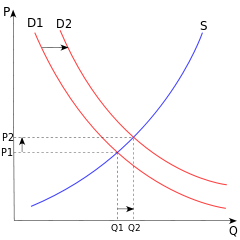First, i will tell you about
income elasticity of demand and
cross elasticity of demand in order to make easy to understand the type of goods.
Income Elasticity of Demand: It measures the susceptibility of demand in reaction to change in income.
Cross Elasticity of Demand: It measures the quantity of demanded one good in response to a change in price of another.
Normal good: It is a good or service that as consumer income increases, demand of the good rises but, at a rate lesser than the rate of increase in income. In other words, income elasticity of demand increase is positive but, less than one. For instance, if the demand for clothing increases by %8 when real income increases by %12, clothing is classified as a normal good and it is said that it has %12 income elasticity.
Luxury good: It is a good or service that as consumer income increases, demand of the good rises at a rate that bigger than the rate of increase in income. It means that income elasticity of demand is bigger than one. If the demand for sports cars increase by %15 when real income increases %10 then, it is classified as luxury good.
Inferior good: It is a good or service that as consumer income increases, demand of the good falls. As consumer becomes finacially better, the demand for such goods fall because consumers can now afford higher priced goods and services. For example, a consumer prefer his personel car if his financial situation gets better rather than public transportation. In that case, public transportation is an inferior good.
It is a good that has a neagtive income elasticity. Because, demand of inferior good decreases at a rate more than the change consumer's income.
Complementary goods: It is a good or service that its use is dependant to another associated goods or service. For example, tennis ball and tennis racket, car and gasoline.
Complementary goods have a negative cross elasticity of demand. If the price for one good increses, the demand for both complementary goods fall. The more goods are linked eachother, the higher cross elasticity of demand.
Substitute goods: Substitute goods are two different goods which can be used to satisfy same needs. If the price of one good rises, the demand for the substitue increase. Hence, substitutes good have positive elasticity of demand.


